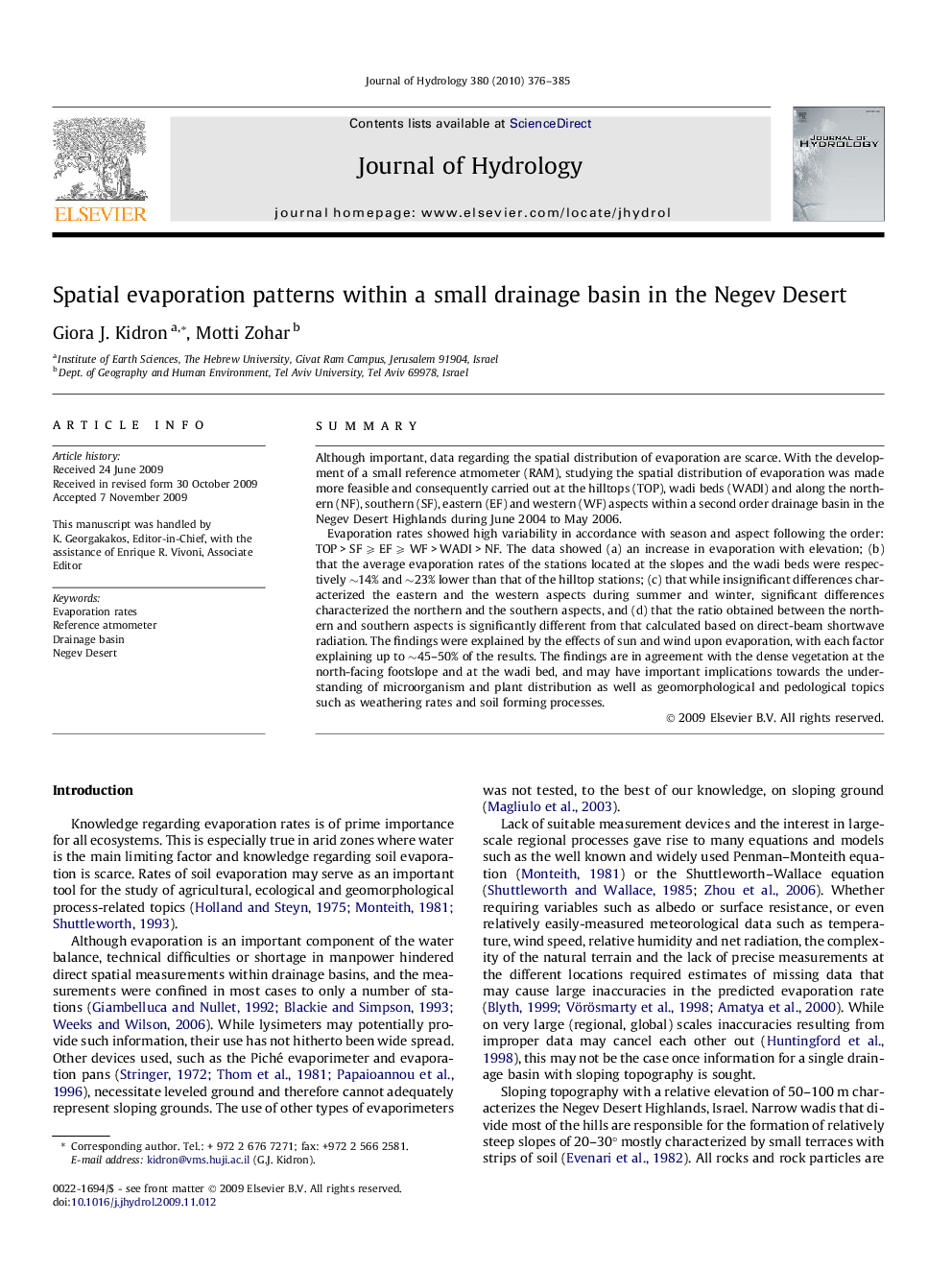| Article ID | Journal | Published Year | Pages | File Type |
|---|---|---|---|---|
| 4578374 | Journal of Hydrology | 2010 | 10 Pages |
SummaryAlthough important, data regarding the spatial distribution of evaporation are scarce. With the development of a small reference atmometer (RAM), studying the spatial distribution of evaporation was made more feasible and consequently carried out at the hilltops (TOP), wadi beds (WADI) and along the northern (NF), southern (SF), eastern (EF) and western (WF) aspects within a second order drainage basin in the Negev Desert Highlands during June 2004 to May 2006.Evaporation rates showed high variability in accordance with season and aspect following the order: TOP > SF ⩾ EF ⩾ WF > WADI > NF. The data showed (a) an increase in evaporation with elevation; (b) that the average evaporation rates of the stations located at the slopes and the wadi beds were respectively ∼14% and ∼23% lower than that of the hilltop stations; (c) that while insignificant differences characterized the eastern and the western aspects during summer and winter, significant differences characterized the northern and the southern aspects, and (d) that the ratio obtained between the northern and southern aspects is significantly different from that calculated based on direct-beam shortwave radiation. The findings were explained by the effects of sun and wind upon evaporation, with each factor explaining up to ∼45–50% of the results. The findings are in agreement with the dense vegetation at the north-facing footslope and at the wadi bed, and may have important implications towards the understanding of microorganism and plant distribution as well as geomorphological and pedological topics such as weathering rates and soil forming processes.
